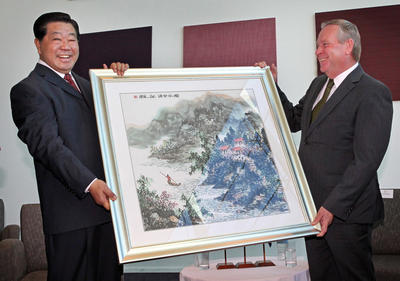But in a highly globalised, interconnected world, international engagement is no longer the sole domain of national governments. Other units of government below the national level also have significant roles to play and interests to serve, and, increasingly, the capacity to do so.
In many US, European and even Asian countries, such as Japan and China, ‘subnational governments’ (SNGs) have been actively engaging with countries near and far, creating international networks at the subnational level through trade, sister-city and cultural exchanges, scientific and technical collaboration, economic cooperation and even foreign-aid delivery. Some SNGs have even extended into hard-core issues of international diplomacy, foreign policy and national security, partly because of their not national government status.
In Australia, SNGs have taken a lower profile in international engagement. This partly results from their dependence on federal funding and Australia’s geographic isolation. But Australian SNGs have come to better appreciate that, first, their economies are ever more dependent on foreign investment and international trade and services; second, that their constituencies can directly benefit from the SNGs’ own international linkages; and third, that in the process of building these linkages, SNGs can increase their autonomy — financial and otherwise — from the federal government. There is now a clear trend among Australian SNGs toward developing their own strategies and rules of engagement with overseas partners.
In the 2011 Menzies lecture at King’s College in London, Premier Colin Barnett of Western Australia (WA) outlined how his ‘resource state’ has become gradually connected to Asia.
It is a well-established fact that WA’s close connections with Asia are aided both by geographic proximity and mineral exports. But for WA, engagement means more than simply being ‘China’s quarry’. In his speech Barnett discussed a less well-known fact about the relation between his state and the region: the premier pointed out that Australia’s trade with Asia is dependent upon WA’s resources, which supply 44 per cent of Australia’s merchandise exports — equivalent to the combined value of exports from New South Wales, Victoria and Queensland. The premier observed that his state is becoming ‘much more independent financially’ and will ‘fully integrate’ with Asia.
It is not just resource-rich states like Western Australia and Queensland that are seeking to connect with Asia; New South Wales and Victoria are also reaching out as never before. Large Asian migrant communities in these states bring much-needed skills, and international students — mainly from China and India — who contribute money to education providers and tax revenue to both the federal government and SNGs.
Now Australian state governments and large city councils are putting together strategies to connect to Asia in unprecedented ways. For example, the Victorian government has a focused ‘Trade Engagement Program India’, which included the largest-ever state trade mission to India, with more than 200 companies and some 300 delegates seeking trade, investment and other linkages. A similar strategy is now also being prepared for China.
Even South Australia — a state with a relatively small population and a long history of European orientation — has been catching up with the rest of the Australian states, especially in the last five years. It may take at least a generation to change the old mindset, but as the winds of internationalisation blow a new world order into shape, SNGs seem to be reorienting toward the region where most of their trade and new immigrants come from.
Effective engagement between Australia’s SNGs and Asia will take time: leaders in politics, business and education need to abandon their traditional perception of Asia as poorly developed and in need of Australia’s training and education. Creative and strategic thinking with medium- to long-term vision will assist SNG leaders to engage with their counterparts in Asia much more deeply and productively. To this end, they also need to invest in learning about Asia and prepare to engage on an equal footing. Investing the money, time, energy and patience required will be worth their while.
It is also time for Asia’s political and economic leaders to understand that the route to links and engagement with Australia is not just via the national government and its embassies and consulates; new openings are available via SNGs’ offices in major cities around Asia, and through direct contact with state and other SNG agencies for business, migration, education or cultural linkages. In a global world, local is at least as important as national. Australian SNGs are now beating tracks on that path.
Purnendra Jain is Professor in Asian Studies at the University of Adelaide and President of the Asian Studies Association of Australia. He is the co-editor, with John Spoehr, of The engaging state: South Australia’s engagement with the Asia Pacific region, Wakefield Press (2012).
This post is part of the series on the Asian Century which feeds into the Australian government White Paper on Australia in the Asian Century.

